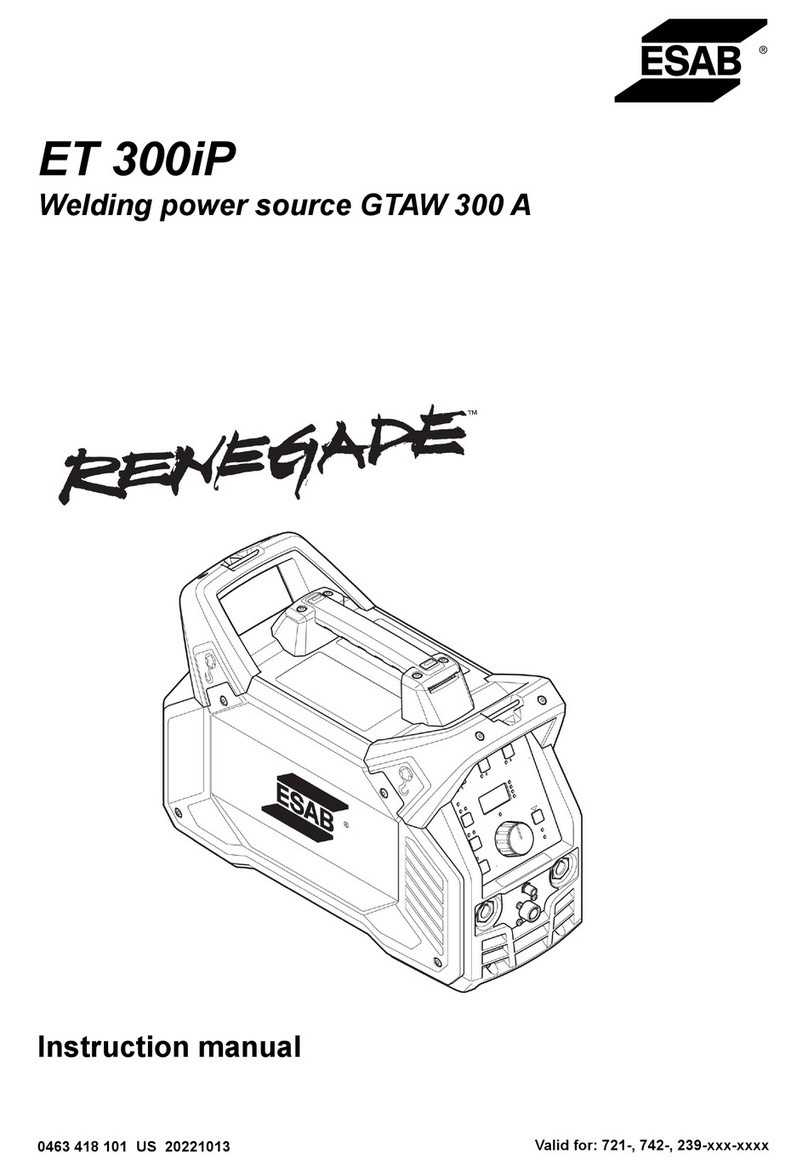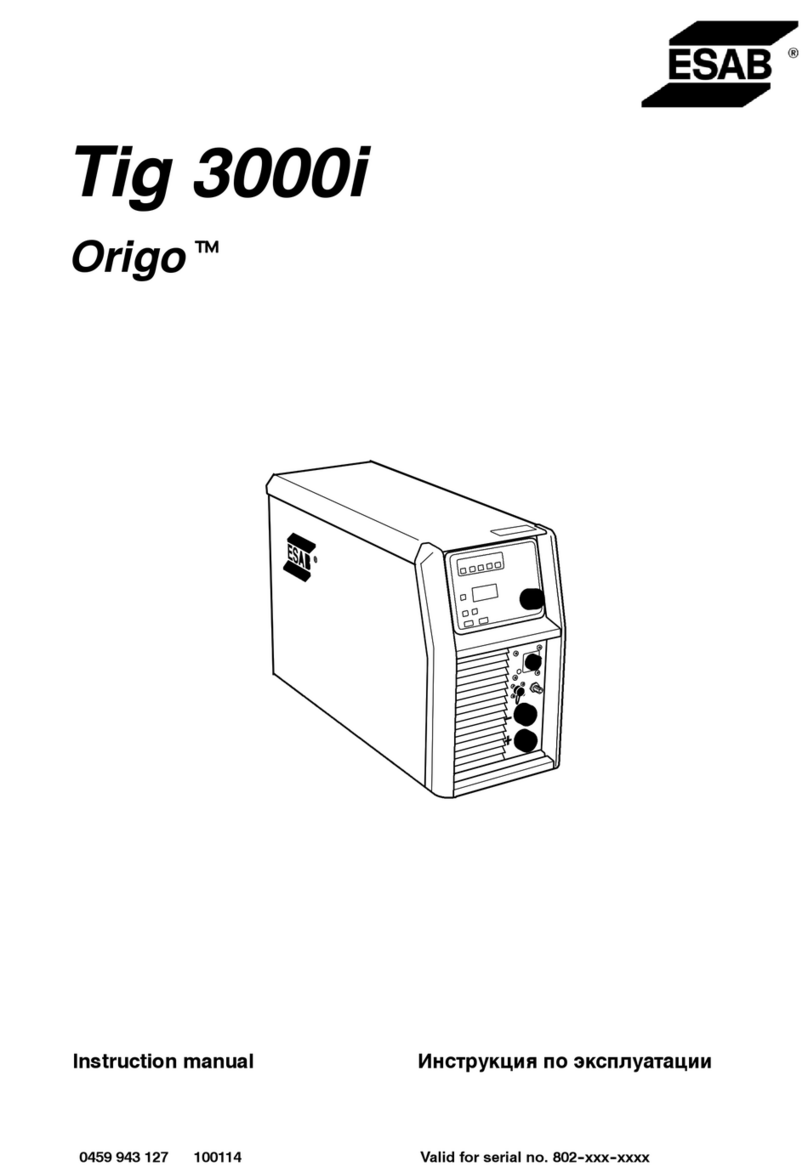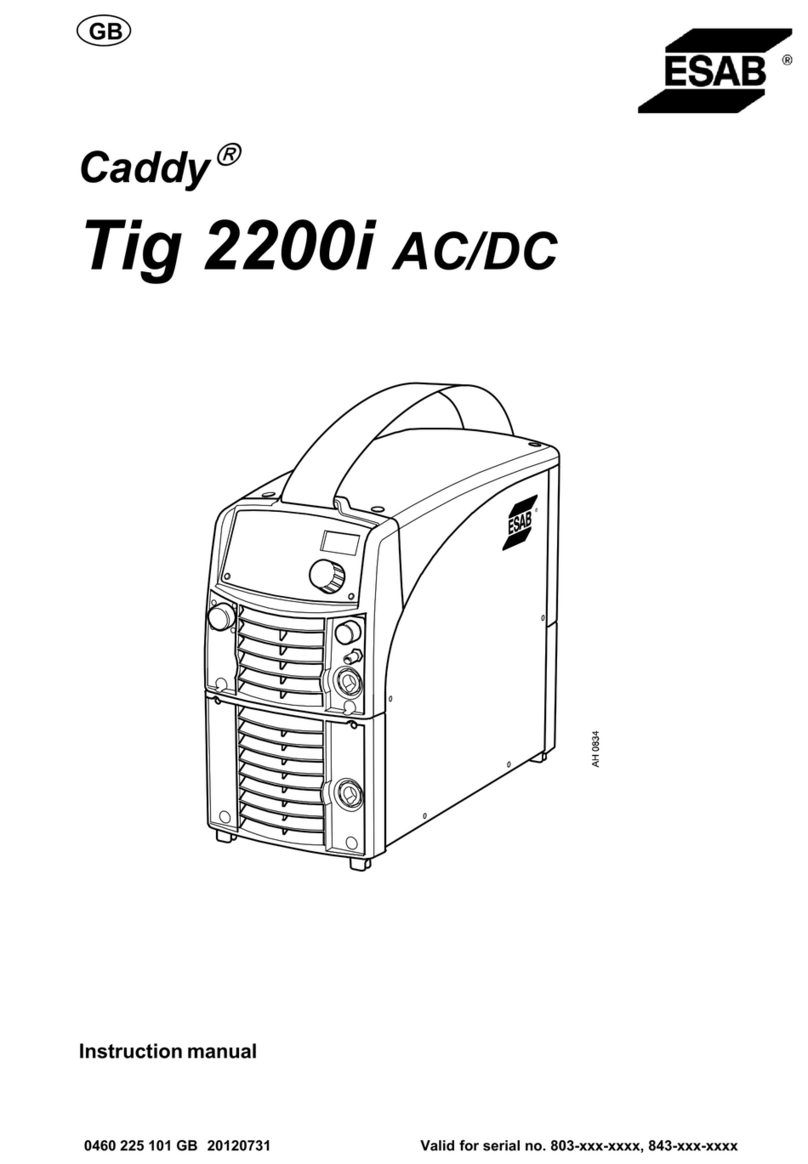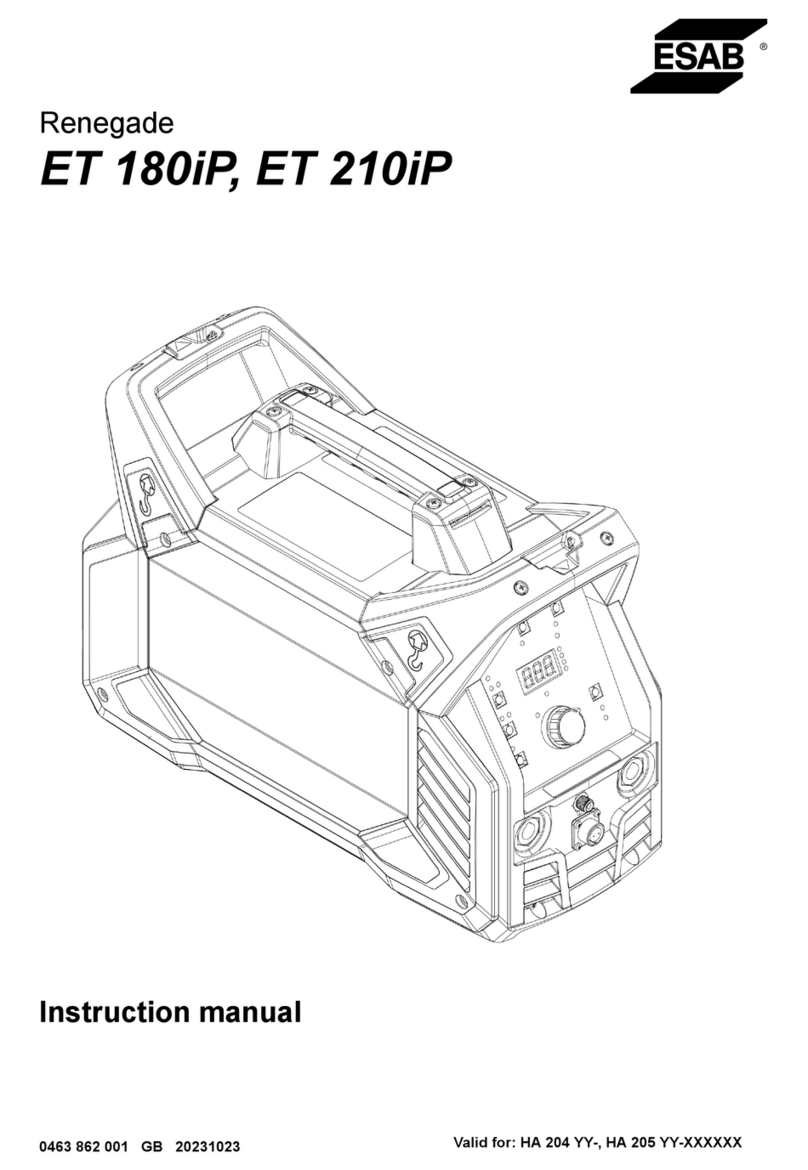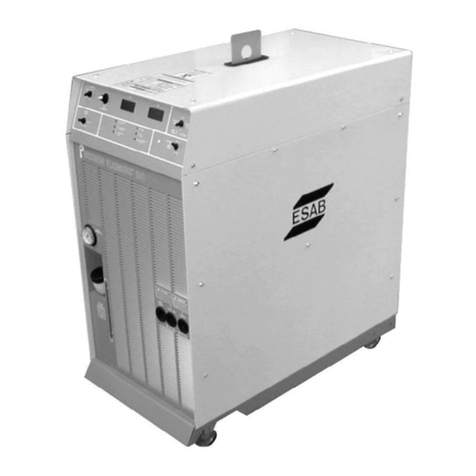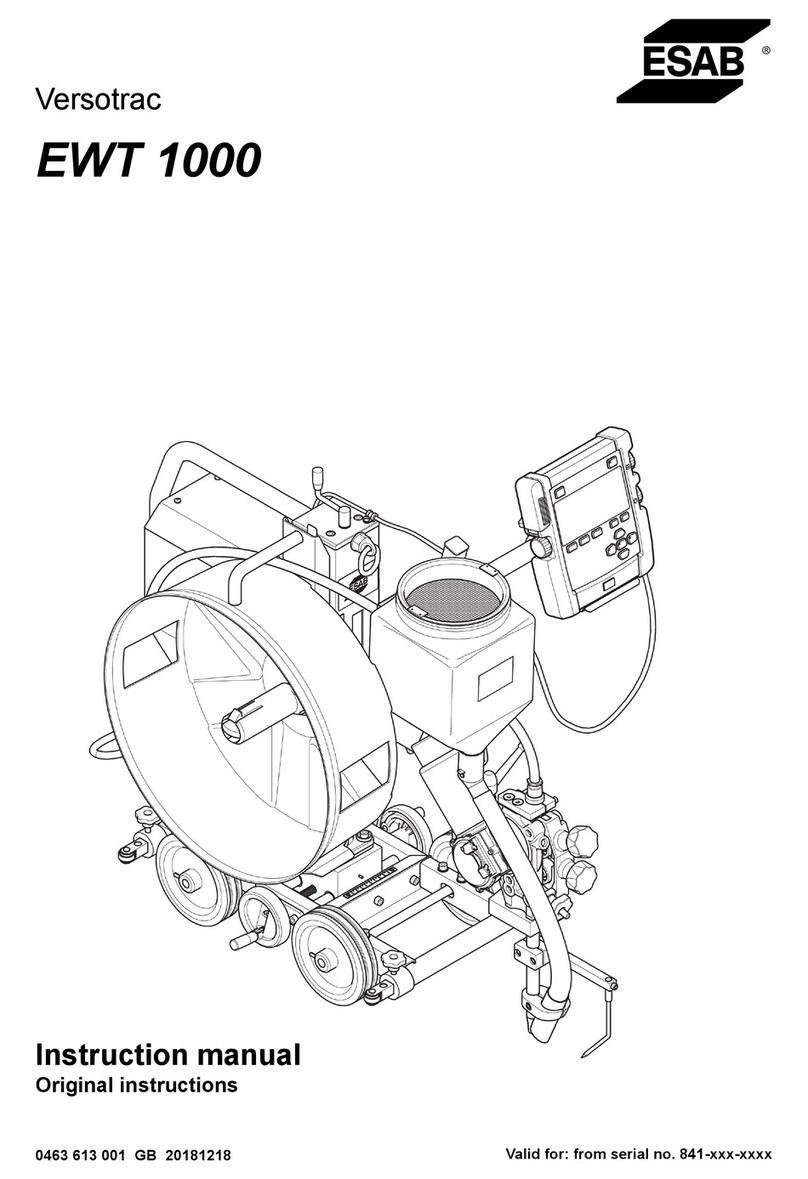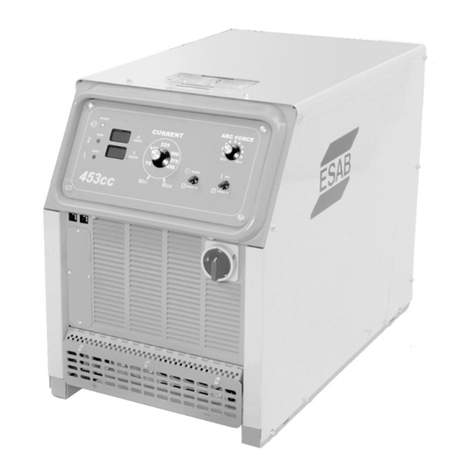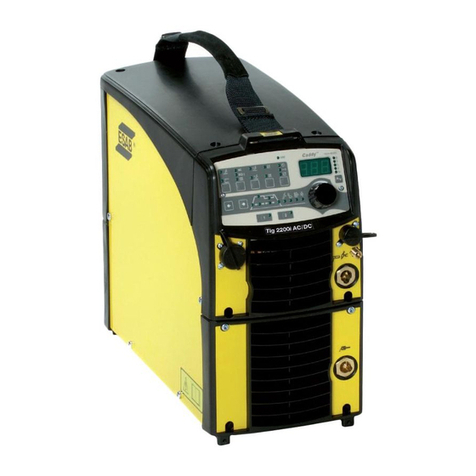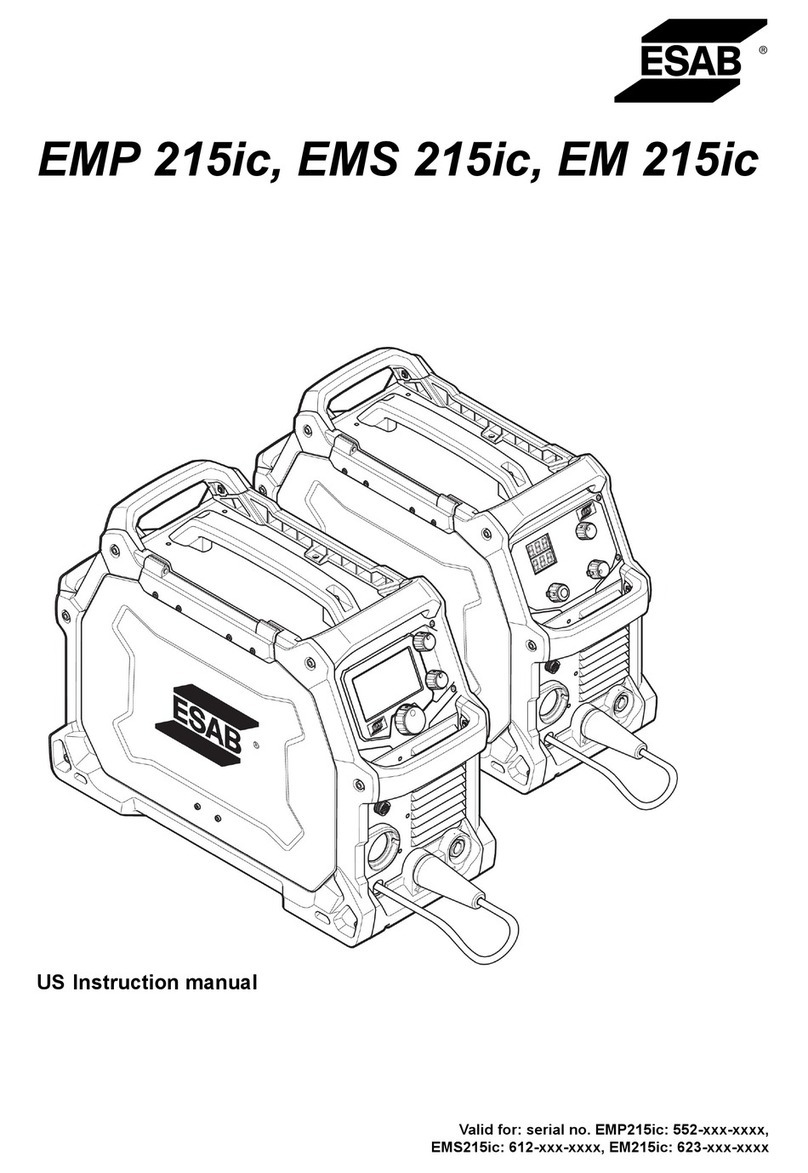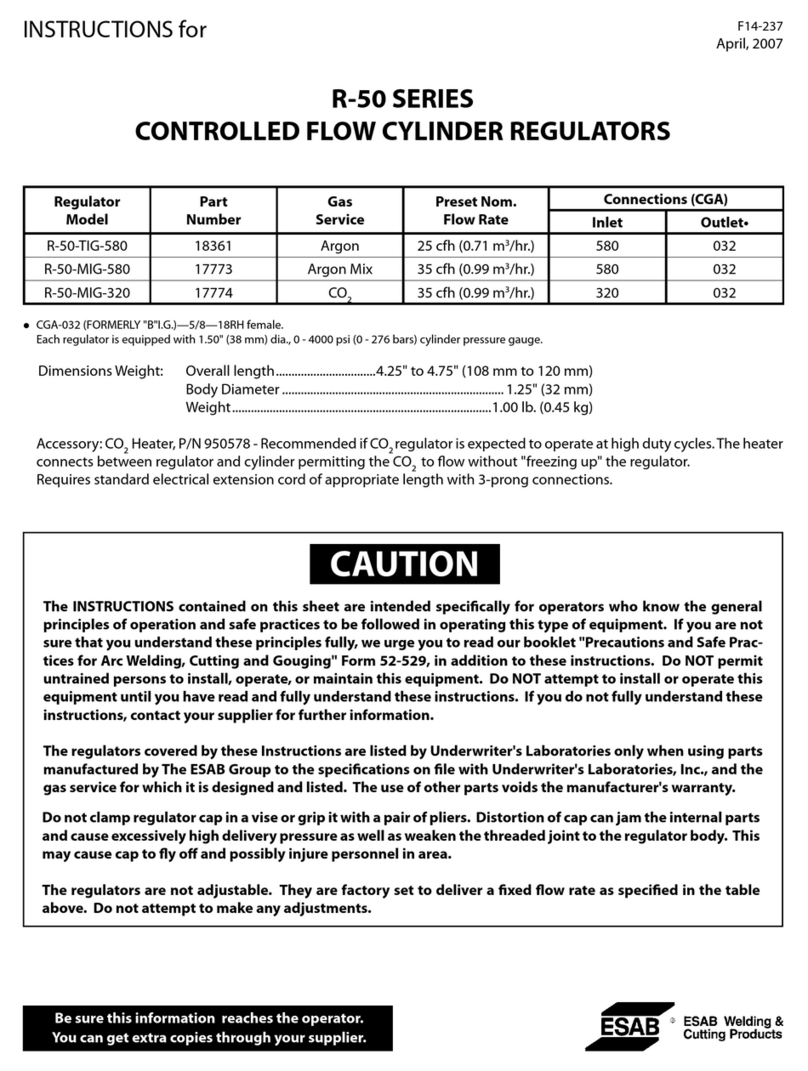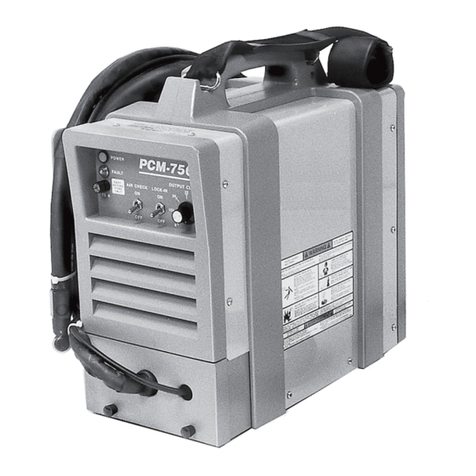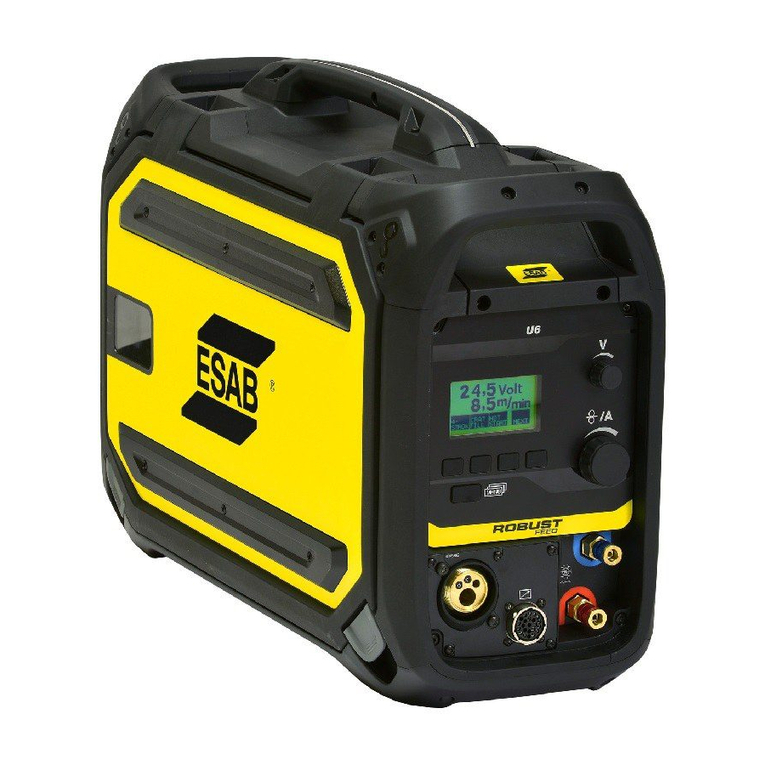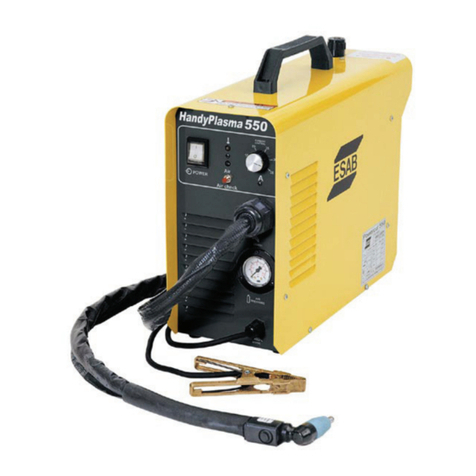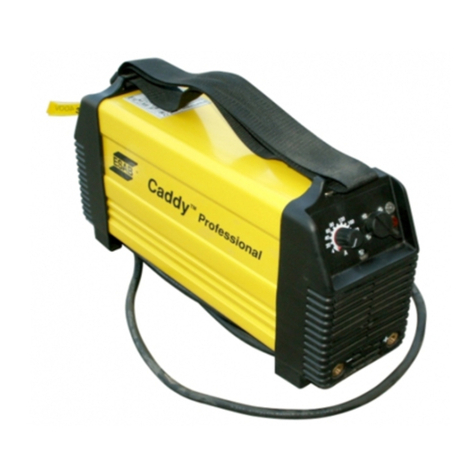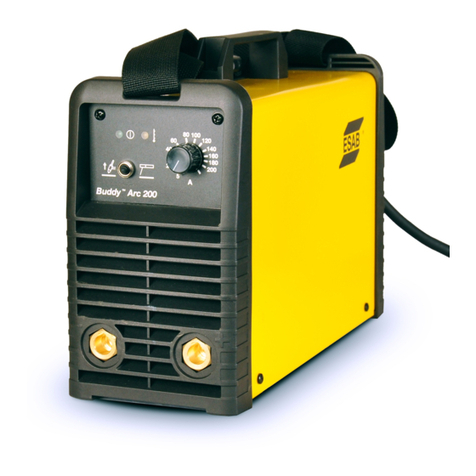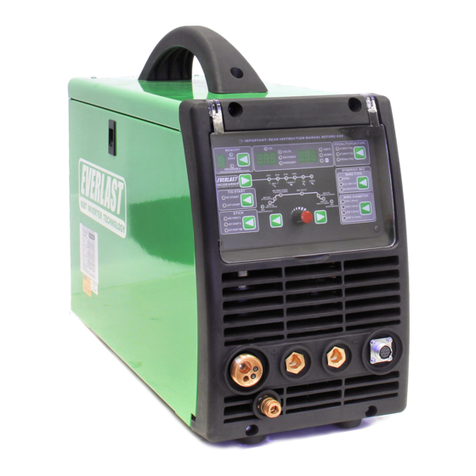
TABLE OF CONTENTS
0446 680 001 -2- © ESAB AB 2021
1 SAFETY ...................................................................................................................................... 4
1.1 Meaning of symbols .................................................................................................... 4
1.2 Safety precautions ...................................................................................................... 4
1.3 User responsibility ...................................................................................................... 8
1.4 California proposition 65 warning ............................................................................. 10
2 INTRODUCTION ......................................................................................................................... 11
2.1 Equipment.................................................................................................................... 11
3 TECHNICAL DATA ..................................................................................................................... 12
4 INSTALLATION........................................................................................................................... 13
4.1 Lifting instructions ...................................................................................................... 13
5 OPERATION ............................................................................................................................... 15
5.1 Connections and control devices .............................................................................. 16
5.2 Starting procedure ...................................................................................................... 16
5.3 Lighting inside the wire feed unit .............................................................................. 17
5.4 Bobbin brake................................................................................................................ 17
5.5 Changing and loading wire......................................................................................... 17
5.6 Changing feed rollers.................................................................................................. 18
5.7 Changing the wire guides........................................................................................... 18
5.7.1 Inlet wire guide ................................................................................................... 19
5.7.2 Middle wire guide ............................................................................................... 19
5.7.3 Outlet wire guide ................................................................................................ 20
5.8 Roller pressure ............................................................................................................ 20
5.9 Wear parts storage compartment .............................................................................. 22
5.10 Attaching the wheel kit ............................................................................................... 22
5.10.1 Attaching the wheels to the wheel kit frame ....................................................... 22
5.10.2 Wire feed unit in vertical position........................................................................ 23
5.10.3 Wire feed unit in horizontal position ................................................................... 23
5.11 Attaching both the wheel kit and the torch strain relief accessory........................ 24
5.12 Marathon Pac™ installation ....................................................................................... 25
6 CONTROL PANEL...................................................................................................................... 28
6.1 External control panel................................................................................................. 28
6.2 Internal control panel .................................................................................................. 29
6.3 Function explanation .................................................................................................. 29
6.4 Operating procedures ................................................................................................. 31
6.4.1 Weld data table................................................................................................... 31
6.4.2 RobustFeed AVS with CC Power Sources ......................................................... 32
6.4.3 RobustFeed AVS with CV power sources .......................................................... 32
6.4.4 Shutdown ........................................................................................................... 32
6.5 Rotating the control panel .......................................................................................... 33
7 MAINTENANCE.......................................................................................................................... 34
7.1 Inspection, cleaning and replacement ...................................................................... 34
8 TROUBLESHOOTING ................................................................................................................ 35
9 ORDERING SPARE PARTS ....................................................................................................... 36
WIRING DIAGRAM ................................................................................................................................ 37
ORDERING NUMBERS ......................................................................................................................... 38
WEAR PARTS........................................................................................................................................ 39
